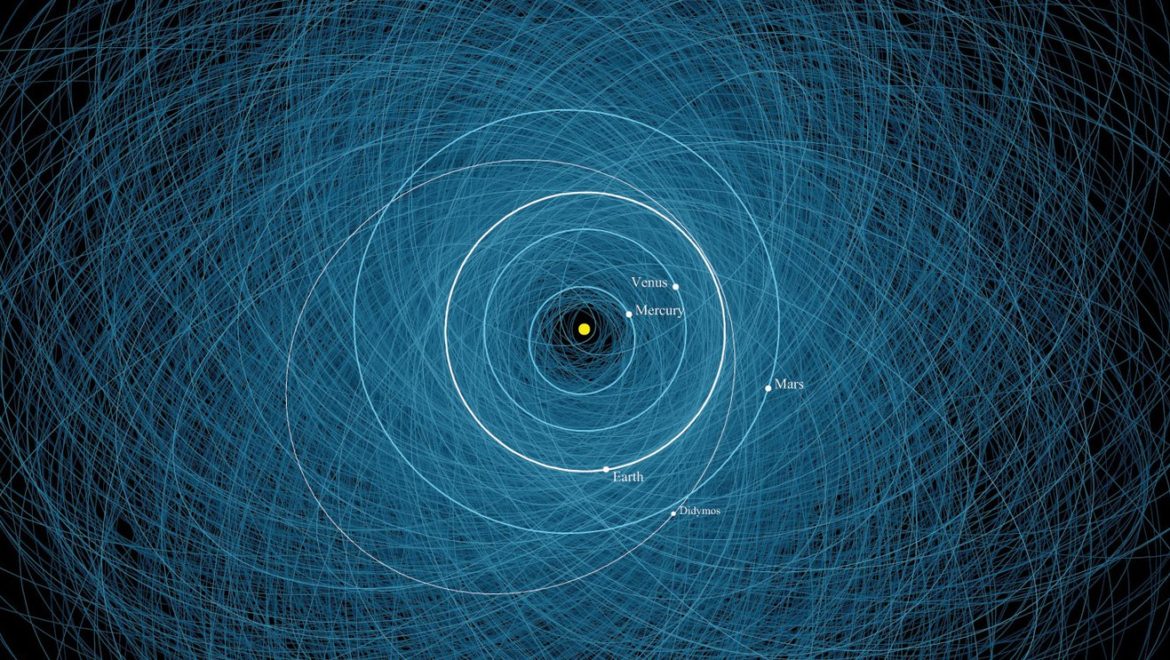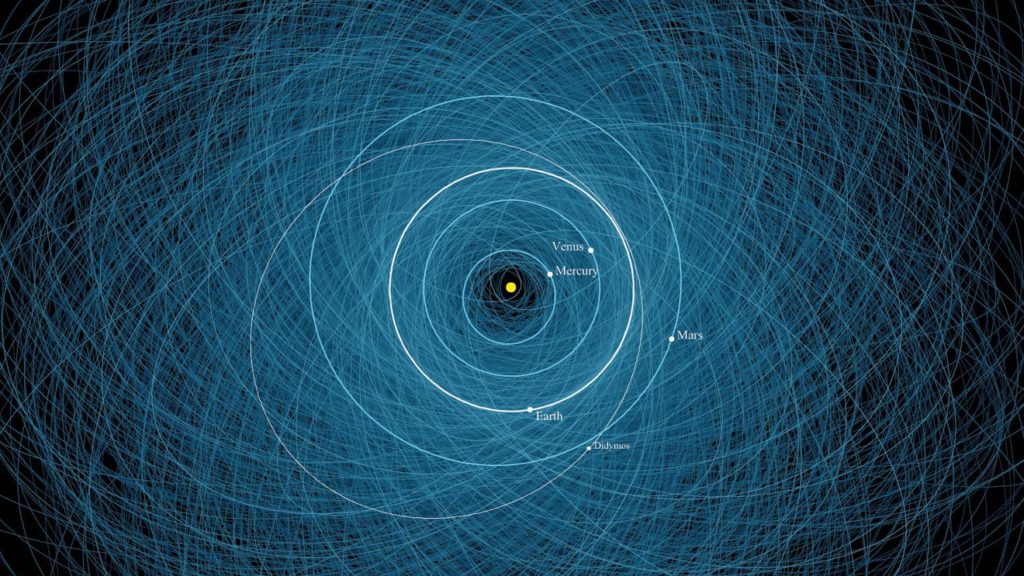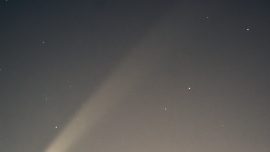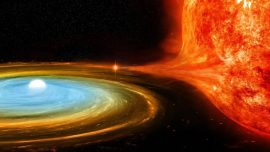ATLAS Asteroid Hunting Network Now Fully Operational
ATLAS, a vital sentinel in the search for near Earth asteroids is now fully operational.

From right to left: an artist’s conception of NEO Surveyor (Credit: NASA). DART at Didymos (Credit: NASA/Johns Hopkins). ATLAS-El Sauce observatory in Chile (Credit: University of Hawai’i). ATLAS-Sutherland observatory in South Africa (Credit: Willie Koorts (SAAO).
It’s one of the most vital endeavors in modern astronomy. NASA recently announced that the Asteroid Terrestrial-impact Last Alert System (ATLAS) now is, with the addition of two separate southern hemisphere sites—complete. Operated by the University of Hawai’i Institute for Astronomy on behalf of the agency’s Planetary Defense Coordination Office (PDCO) the addition of two new sites, one in Chile and another in South Africa, now includes four telescopes overall, in addition to the two northern hemisphere telescopes based and Maunaloa and Haleakala in Hawai’i, now affords all-sky coverage of both hemispheres of the sky every night, looking for near Earth asteroids.
“An important part of planetary defense is finding asteroids before they find us, so if necessary, we can get them before they get us,” says Kelly Fast (NASA/PDCO) in a recent press release. “With the addition of these two telescopes, ATLAS is now capable of searching the entire sky every 24 hours, making it an important asset for NASA’s continous effort to find, track and monitor NEOs.”
The first two telescopes were developed under a 2013 grant from NASA’s Near-Earth Objects Objects Observations Program, and came online in 2017. The two new telescopes are located at the El Sauce Observatory in the Rio Hurtado Valley in Chile, and the Sutherland Observatory in South Africa, respectively. Each site features a 0.5 meter telescope, capable of scanning a 5-degree wide swath of the sky 100 times the size of the Full Moon. Since 2017, ATLAS has discovered over 700 near-Earth Asteroids (NEAs) and 66 comets and counting, many of which later put on a fine celestial show.
The system has already demonstrated the viability of the “Last Alert” part of its name: two small asteroids –2018 LA and 2019 MO—were detected just hours before impact. The ATLAS-Sutherland observatory has already made its very first solo detection: asteroid 2022 BK, a 100-meter asteroid that passed 5.6 million miles from the Earth on January 28th, 2022.
Tracking near-Earth asteroids is especially tricky for large professional telescopes, as they’re relatively fast movers against the starry background. With a wide field of view and an agile response time, the ATLAS system excels in nabbing new objects that come within the sphere of the Earth-Moon system, about a quarter of a million miles distant.
Worldwide coverage is critical: until ATLAS came online, we were often only hearing about close asteroid passes near Earth after they occurred. Chelyabinsk was also a wake-up call, as a 20-metre asteroid exploded over the Russian city of 1.1 million the morning after Valentine’s Day 2013. This particular space rock snuck in at Earth undetected from a sunward direction.
Another mission may soon take this vigilance against low-flying rocks into space. NASA’s Near-Earth Object Surveyor mission (NEO Surveyor) recently received the green-light to move ahead into Preliminary Design/Key Decision Point-B. This mission would launch in 2026, and use a 50-centimeter mirror to hunt for NEOs in the infrared from its Sun-Earth Lagrange Point 1 (L1) vantage point.
But we’re not waiting for the hazardous asteroids to come to us. NASA’s DART (Double Asteroid Re-Direction Test) launched in November 2021 headed to impact asteroid 65803 Didymos’ moon Dimorphos in late September/early October of this year. OSIRIS-Rex is bringing samples back from 101955 Bennu on September 24th, 2023, an asteroid that could, centuries from now, possibly hit the Earth. And launching along with nine other smallsat missions on SLS Artemis-1 this April is NEA Scout, a small solar sail mission aiming to intercept the 15-metre asteroid 2020 GE in 2024.
We can never know too much about hazardous asteroids and our local solar neighborhood. Expect to see a lot more comets named ‘ATLAS’ very soon.








